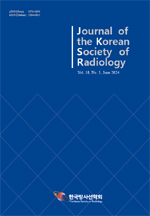
여성형유방증 발생에 영향을 미치는 통합적 요인분석
Integrated Factor Analysis of the Influences on the Development of Gynecomastia
- 한국방사선학회
- 한국방사선학회 논문지
- 제18권 제3호
- 2024.06
- 275 - 282 (8 pages)
본 연구는 여성형유방증을 진단받은 환자와 정상 대조군 사이의 혈액검사 결과 및 생활 습관을 비교하여 여성형유방증의 발생에 영향을 미치는 요인을 분석하였다. 위험인자 간의 평균차이검정은 독립표본 t 검정과 카이제곱검정을 시행하였으며 로지스틱 회귀분석을 통해 여성형유방증 발생에 영향을 미치는 다양한 예측 인자들의 상대적 위험비를 산출하였다. 나이, HGB, HCT, TC, Glucose, ALT, 음주, 탈모약, 전립선비대증 치료제가 유의한 차이를 보이는 변수로 확인되었다. 특히 탈모약은 위험비 단변량분석에서 15.79로 가장 높게 나타났으며 HGB는 0.37배로 감소하였다. 이러한 결과는 여성형유방증 발생에 이들 요인이 중요한 역할을 할 수 있음을 시사하며, 향후 여성형유방증의 진단 및 관리를 위한 기초자료로 활용될 수 있을 것이다.
This study analyzed the factors that influence the development of gynecomastia by comparing blood test results and lifestyle between patients diagnosed with gynecomastia and normal control group. Independent sample t-test and chi-square tests were conducted to examine the mean differences among risk factors, and logistic regression analysis was used to calculate the relative risk ratio of various predictors influencing the development of gynecomastia. Age, HGB, HCT, TC, glucose, ALT, alcohol consumption, hair loss medication and medication for benign prostatic hyperplasia were identified as significant variables. Notably, the use of hair loss medication showed the highest univariate odds ratio of 15.79, while HGB decreased by a factor of 0.37. These results suggest that these could play a significant role in the onset of gynecomastia and could serve as foundational data for future diagnosis and management of the condition.
Ⅰ. INTRODUCTION
Ⅱ. MATERIAL AND METHODS
Ⅲ. RESULTS
Ⅳ. DISCUSSION
Ⅴ. CONCLUSION
Reference